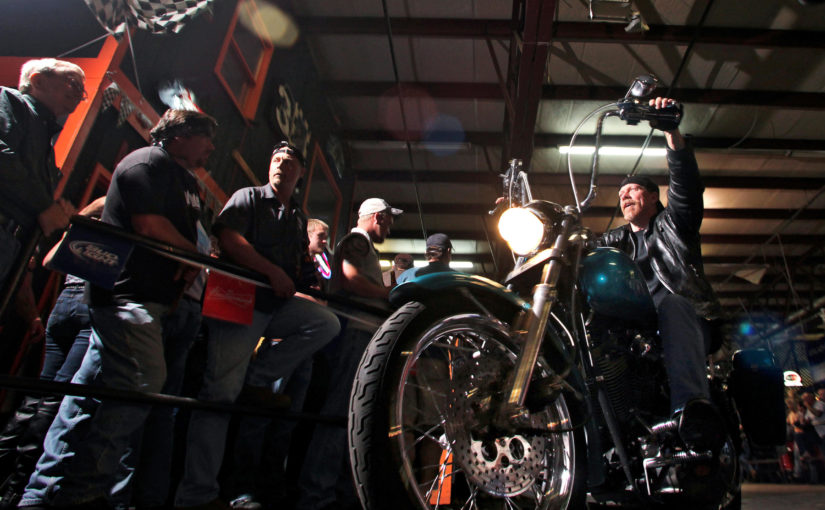- Know your limitations. I have had to cut people off that wanted to argue that they are not drunk while piss runs down their leg. (Notice I said people not person, it happens regularly.) I watched as a young sorority girl who was dancing shit herself and just kept dancing till her friends grabbed her and took her out. I was headed that way but couldn’t stop laughing quick enough to get there on time. Drinking is fun, it relaxes you, it help’s deal with stress. I get it. I have been known to imbibe myself heavily at times, but I stay at home to get that fucked up. I won’t even go into the horror stories of watching another human being throw up in a glass then drink it because he was that far gone. If a bouncer, security/bar staff cuts you off, it is for a real good reason. You are a problem or are on your way to becoming a problem. Also, you can and will be cut off for being an asshole. Don’t argue with the staff. You are there as a guest. You can and will be asked to leave. We reserve the right to refuse service to anyone and that includes you! Think about this, do you really want to make someone mad who is going to be serving you something to drink? The head bartender at a bar I worked at kept a vile of what he called Tijuana Tap water behind the bar for patrons that pissed him off. Not real sure what was in it, but two or three squirts in your drink and within fifteen minutes you’re running to the bathroom with the worst case of explosive diarrhea that you’ve ever known short of dysentery. Think about that next time you bitch at a waitress or bartender. Sure, it was illegal but that didn’t help you at the time and your night was ruined all because you were not nice.
- Know where you are at. In other words, if you decide to go “slumming” and step away from your socioeconomic level bar and go to a rougher establishment then know the rules that apply there. Every culture and subculture has its own rules that were never written down and posted for you to read but they are there as solid as any law passed by legislation. The joints that pay me my asking price do so because there is a reason for me to be there. I am paid well to keep a lid on the rules and do my best not to let anyone get killed or maimed. If you go to a biker bar, don’t sit on someone’s motorcycle, touch someone’s patch or colors, do not hit on the women, mouth off or disrespect the waitresses. Bikers are territorial and you are the stranger in a strange land. Oh you’re a respected business man and pillar of the community, that’s sweet. See how far that gets you when 8 or 9 guys get mad at you and want to have fun playing field goal with your testicles for crossing a line you didn’t know was there. Be nice, respectful, and polite. Manners do not cost anything and can save hundreds on your health insurance. This goes for any bar or nightclub you might go into. A Hispanic bar is completely different from a club that caters to black or Asian people. Each one has its own rules. The regulars at any bar are protective of the staff. They may even consider them family or friends. My wife bartended in a pretty rough little joint, she was the only staff there during the day but if anyone got out of line with her there were 30 to 40 regulars there that would jump on the offender with no restraint. You are visiting another world when you go to a new bar, and most of the regulars don’t like you for coming into their territory without being asked.
- Bartending and waiting tables is a rough job. Long hours, standing on your feet all night, dealing with drunks, people thinking that because you work there they can put hands on you because that is just part of the deal. Listening to crappy bands who mistake playing well for playing hard and loud. Listening to karaoke singers butcher the newest top 40 song or think they can croon like Sinatra. All for less than minimum wage. Hoping that by the end of the night your tips will be enough to cover the rent and electric bill due Monday morning. So please tip your bar staff. It is sad but when I have to interview people to work in a bar and the first thing I ask them is, “So, do you like people?” If they answer yes, then I know they have not been in the business for very long. If they answer, “I hate people!” I know this is someone that has some experience, and can probably do the job correctly. Do not holler at your waitress, or act like a bitch to them (LADIES)! Whistling, shouting and demanding is not a good thing to do. All they have to do is come and get me and your ass is out of here. I don’t care who you are, what you think or if you can have me fired (good luck on that). Don’t be an asshole! A good tipper can get away with a lot more than a shitty one. Waitresses are less prone to involve me in your life if you are taking care of them.
- Don’t prod the bear!!! I am talking to you young guys who by chance might read this. You’re young, full of life and testosterone. You think you are tough and can handle yourself. Probably not! There are individuals in every bar that it is best to leave the hell alone. They will hurt you as quick as a snake strikes for messing with them. Youthful exuberance is one thing. All that Martial Arts and BJJ/MMA you do at the dojo is great. None of it will stop a bullet from blasting through your heart or a broken beer bottle from ripping out your throat. Life is a marathon, not a 40 yard dash. Men and some women of a certain age got there by being tough, and/or smart, maybe even lucky. They do not have the time nor the patience to deal with you. Being older does not mean that they are any less of a man. It means they were smarter (or just luckier) than all the friends they had to bury along the way. There is a reason that some people are referred to as OG (Original Gangster), Tusk Hogs, Bad Men and other terms. If you are going to be frequenting certain bars, you need to learn that respect and courtesy is a lot cheaper to give than paying for hospital visits or funerals.
One bar I worked at was frequented by an older gentleman that had lived a very interesting life. He was so mobbed up that people would still call him Don as a term of respect. He never got mad, he paid people like me to get mad for him. The guys in his employ did not care who you were, what you thought you knew or what Martial Art you trained in. One would beat you with a hammer while the other one tried to punch your kidney throw your torso.
- Leave the Bouncer/Security staff alone guys. They have a tough enough job to do. They are watching 300 plus drunken monkeys play grab ass with each other. It’s not a fun and glorious job. It’s a nerve wracking headache every shift. You are hoping that no one gets stupid and puts a knife in your kidney. They don’t need you there asking questions or pestering them.
Now let me try and answer a few of the questions I get.
- No, we don’t want your help. If you come up to the bouncer and tell him you have his back in a fight you have just red flagged yourself as a trouble maker. You are looking for a way to fight without getting into trouble. The first thing I will do is from that point on is keep my eye on you and see what kind of bullshit you are up to.
- No you don’t have to be big to be a bouncer, and no, just because you are big does not mean you can bounce. It is people skills and critical thinking that makes a good bouncer. 95% talk 5% ass puckering terror not knowing if you are going to go home that night.
- Yes they are tougher than you. Most bouncers fight more than the average patrol cop. So trying to prove that you are tougher than them is a losing bet. Plus, with a bouncer it is not about social dominance it is just business and the quicker it is over the better for everyone. As Ron White said, “I don’t know how many it would have took but I knew how many they were going to use. All of them”.
- You have to volunteer for the bouncer to get involved in your life. Your actions and behaviors at the bar are all signs, and believe me, they’re watching. Just like a poker game certain things you do, tell them what you are capable of or thinking of doing.
- It’s not personal. Asking you to leave or cutting you off is just business. Don’t come after them when the night is over. Sure you may win but you will go to jail or, on another night you might meet a bouncer that remembers…and paybacks a bitch.
- Leave your ego behind. Who you are, what you are, and what you can do are just red flags. WE DO NOT CARE!
- Show your ID when asked, it’s the law, even if several people ask for it, the bar is simply covering their investment.
- No you are not my friend. You are a patron and a customer. Friends are earned; not just because you drink where I work.
- This is a business. Just like a grocery store or a Walmart, the bottom line is it’s about money. Don’t interrupt the flow of it. If you do be prepared to either pay the cost of a good old fashion ass whipping, being banned/barred from the club or going to jail.
- If the bouncer or security staff are looking for a fight and are known to be quick to hurt a person, don’t frequent that place. Call and complain to the owner or the management. Tell your friends and family not to spend their money there. It can and will make a difference. A security staff that is prone to violence is usually an underpaid bunch of bullies looking to get their rocks off in a fight. Use your money to force the owners into bringing in a better quality of staff. Red Adair said it best, “If you think it’s expensive to hire a professional wait till you figure out the cost of hiring an amateur!” As a bouncer my number one job was being a conflict manager. It’s hard enough dealing with you shit slinging primates when you are sober, Add alcohol or drugs into the mix and WEEEEE you go from just an asshole to God I really want to skull fuck this twerp in his eye socket. But I am there to protect the owner’s investment, so I am going to do my absolute best to treat you correctly and be nice to you till you choose the course of actions that it will take for you to either calm down or be thrown out. But I will get you out of the establishment one way or another. And chances are I know the cops on patrol and guess whose side they are going to take.
Look folks it’s really easy to die or get hurt in this world. In the long run you and your safety are up to you. You can be the greatest conflict manager in the world and act like an ass-hat one time and wind up with your guts on a dance floor. Nobody ever wanted that but I will be dammed if I haven’t seen guys volunteer for it.







